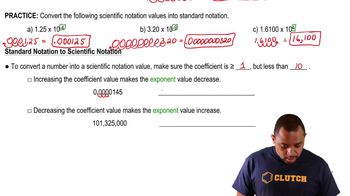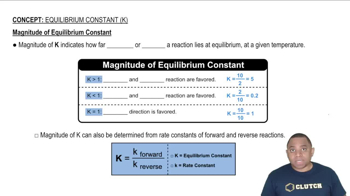Here are the essential concepts you must grasp in order to answer the question correctly.
Unit Conversion
Unit conversion is the process of converting a quantity expressed in one unit to another unit. In this question, we need to convert gigaamperes (GA) to milliamperes (mA) to compare the two quantities directly. Understanding the relationship between these units is crucial, as 1 GA equals 10^9 A and 1 A equals 1000 mA.
Recommended video:
Scientific Notation
Scientific notation is a way of expressing numbers that are too large or too small in a compact form. It is written as a product of a number between 1 and 10 and a power of ten. In this question, 3.1 * 10^15 mA is in scientific notation, which allows for easier comparison with other large numbers, such as 2.9 GA.
Recommended video:
Standard Notation to Scientific Notation
Magnitude Comparison
Magnitude comparison involves evaluating the size of two quantities to determine which is larger or smaller. After converting both quantities to the same unit, we can directly compare their numerical values. This concept is essential for answering the question accurately, as it requires a clear understanding of the relative sizes of the converted values.
Recommended video:
Magnitude of Equilibrium Constant
 Verified step by step guidance
Verified step by step guidance


